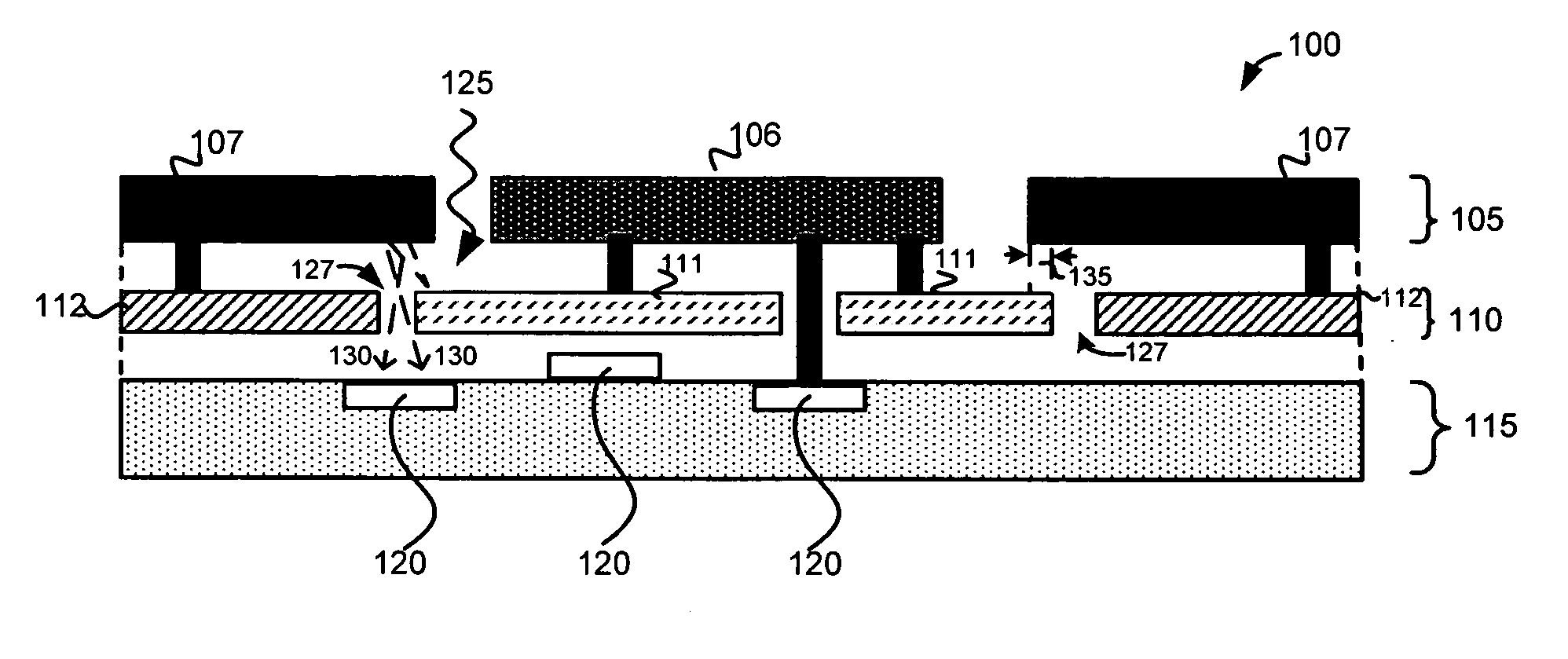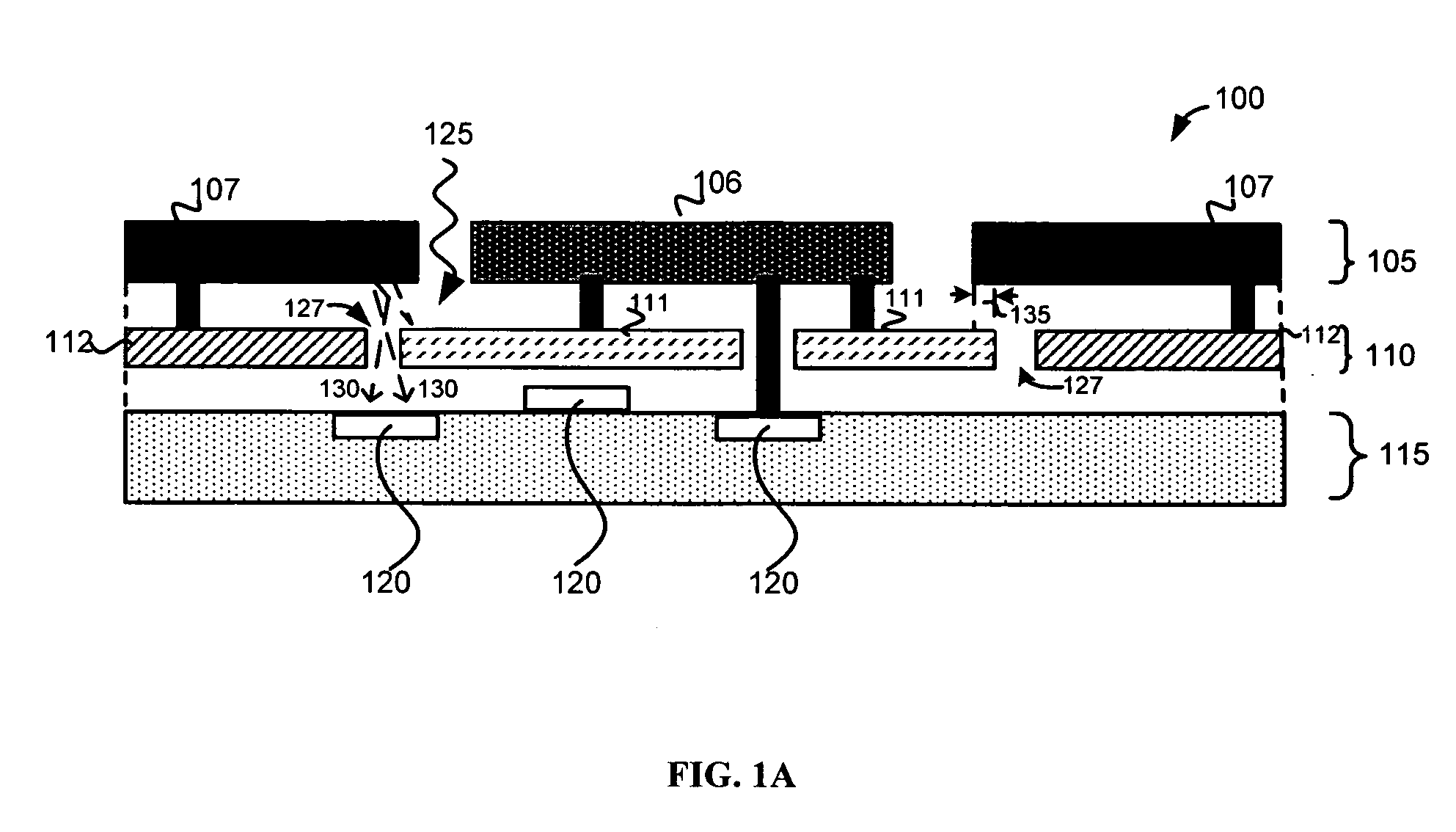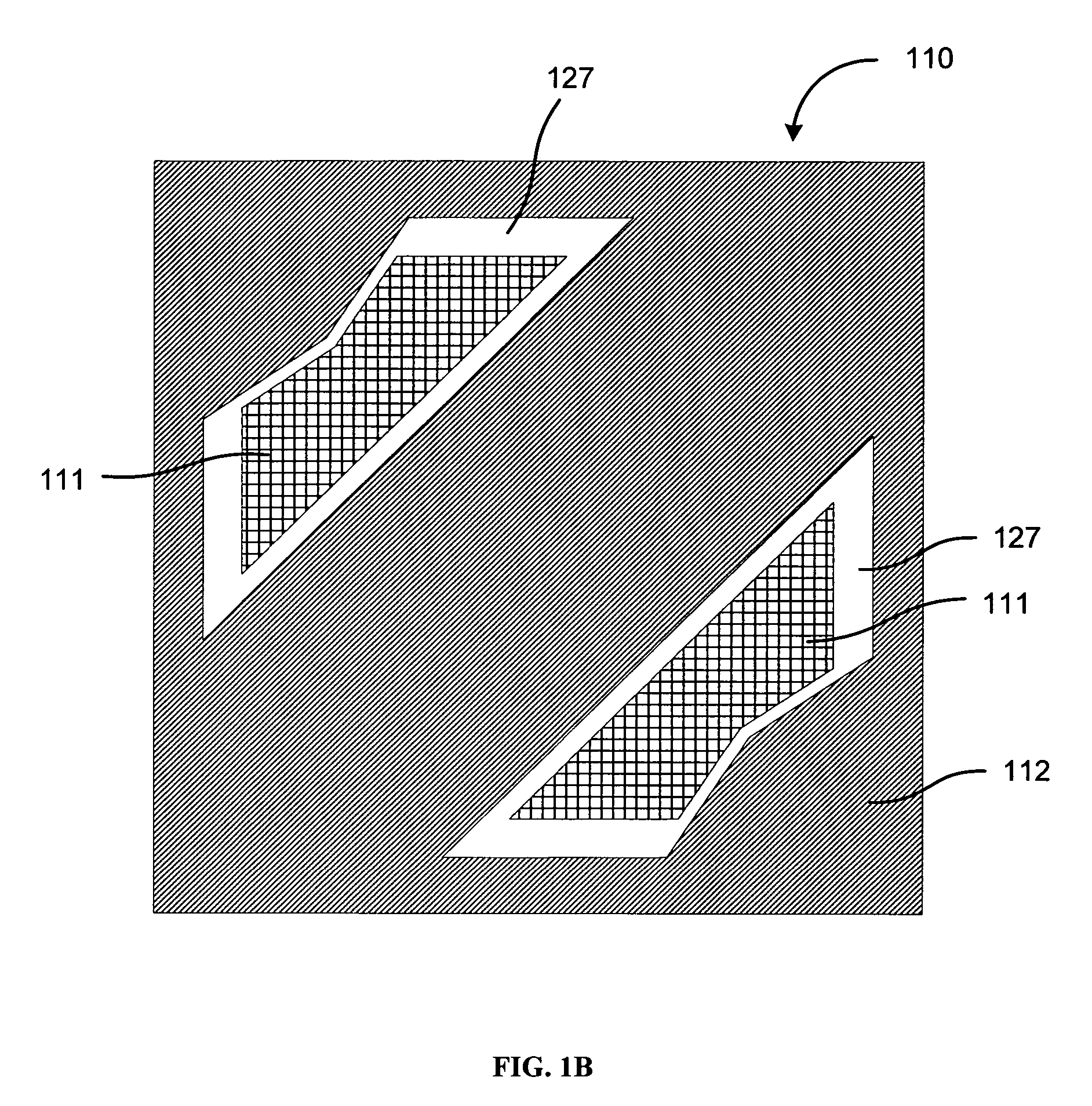Memory cell dual protection
a memory cell and dual protection technology, applied in the field of memory cell dual protection, can solve the problems of destroying the entire operation, dram cell, degrading its stability, etc., and achieve the effects of safe route, easy scaling down, and higher yield memory array
- Summary
- Abstract
- Description
- Claims
- Application Information
AI Technical Summary
Benefits of technology
Problems solved by technology
Method used
Image
Examples
Embodiment Construction
System Architecture
[0022] Referring now to FIG. 1A, there is shown a cross-sectional view of a conventional spatial light modulator (SLM) 100. The SLM 100 includes an electrode layer 105, with an addressing electrode 106 and landing electrodes 107, a two-region light blocking layer 110, with regions 111 electrically connected to the addressing electrode 106 and regions 112 electrically connected to the landing electrodes 107, and a device layer 115 with electrically active regions 120, such as a source, gate, and drain. Referring now also to the top plan view of the conventional two-region light-blocking layer 110 of FIG. 1B, it is comprised of metal or another opaque material and is designed to block incident light 125 from impinging on the device layer 115. However, gaps 127 between the regions of the layer 110 allow some light to pass through. As incident light 125 hits the light-blocking layer 110, light 125 is blocked from impinging directly in the device layer 115. However, ...
PUM
| Property | Measurement | Unit |
|---|---|---|
| energy | aaaaa | aaaaa |
| electrical field | aaaaa | aaaaa |
| thickness | aaaaa | aaaaa |
Abstract
Description
Claims
Application Information
 Login to View More
Login to View More - R&D
- Intellectual Property
- Life Sciences
- Materials
- Tech Scout
- Unparalleled Data Quality
- Higher Quality Content
- 60% Fewer Hallucinations
Browse by: Latest US Patents, China's latest patents, Technical Efficacy Thesaurus, Application Domain, Technology Topic, Popular Technical Reports.
© 2025 PatSnap. All rights reserved.Legal|Privacy policy|Modern Slavery Act Transparency Statement|Sitemap|About US| Contact US: help@patsnap.com



